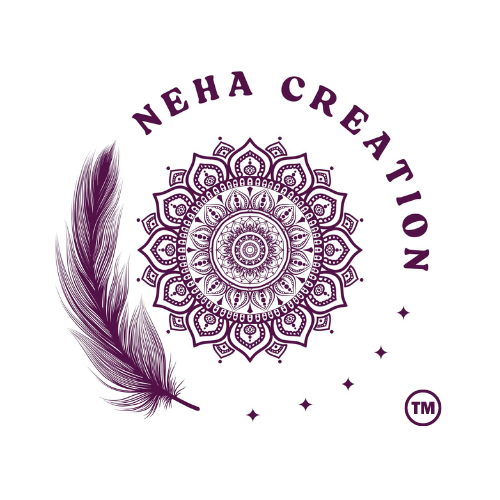Introduction
Mandalas are more than just intricate designs; they are deeply symbolic, meditative, and artistic expressions that captivate the mind and soul. If you've ever wondered, "Why do I create mandalas?", the answer may lie in your emotions, creativity, spirituality, or need for inner peace.
For centuries, mandalas have been used in spiritual practices, meditation, and art therapy, making them a powerful tool for self-expression and mindfulness. Whether you're a beginner or an experienced artist, understanding why you create mandalas can help deepen your artistic journey and provide a greater sense of fulfillment.
In this article, we explore the reasons behind creating mandalas, their significance in different cultures, the benefits of mandala art, and how to enhance your skills in this intricate art form.
1. The Spiritual and Cultural Significance of Mandalas
Mandalas hold deep spiritual and cultural meaning across different traditions and practices:
🔹 Hindu & Buddhist Traditions: Mandalas symbolize the universe, spiritual awakening, and enlightenment. Buddhist monks create sand mandalas as a meditative practice, later erasing them to represent the impermanence of life.
🔹 Native American & Indigenous Cultures: Many tribes use circular patterns in their art to signify unity, balance, and harmony with nature.
🔹 Christian & Gothic Art: Stained-glass rose windows in cathedrals often feature mandala-like patterns representing divine order.
🔹 Modern Mandala Art: Today, mandalas are used in art therapy, mindfulness practices, and personal growth.
Understanding the historical roots of mandalas can provide a deeper connection to why you create them.
2. Reasons Why People Create Mandalas
The motivations behind creating mandalas vary from person to person. Here are some of the most common reasons:
✅ Meditation & Mindfulness: Many artists draw mandalas as a form of meditation, helping them enter a state of flow and relaxation.
✅ Self-Expression & Creativity: Mandalas allow individuals to explore their artistic side, emotions, and personal experiences.
✅ Healing & Stress Relief: The repetitive patterns and symmetrical designs help calm the mind and reduce stress.
✅ Spiritual Connection: Some create mandalas as a way to connect with higher consciousness, inner peace, or personal spirituality.
✅ Personal Growth & Reflection: Each mandala tells a unique story about the artist’s thoughts, emotions, and personal journey.
✅ Professional Art & Business: Many artists create mandalas for selling, teaching, or exhibiting their work.
Ask yourself: What draws you to mandala art? The answer may reveal deeper insights about your artistic and personal journey.
3. The Psychological and Emotional Benefits of Drawing Mandalas
Mandalas offer a wide range of mental and emotional benefits, making them a popular form of art therapy:
🌿 Reduces Anxiety & Stress – The structured, repetitive nature of mandalas promotes a sense of calm.
🎨 Boosts Creativity – Experimenting with different patterns and colors encourages artistic exploration.
🧘 Enhances Focus & Concentration – The detailed work involved in mandala creation improves mindfulness and attention.
💡 Encourages Self-Discovery – The colors, shapes, and symbols used often reflect subconscious thoughts and emotions.
📖 Strengthens Emotional Well-being – Creating mandalas can be an emotional release, helping to process feelings and improve mental clarity.
The process of making mandalas is as therapeutic as the final artwork itself.
4. The Different Types of Mandalas and Their Symbolism
If you’ve been creating mandalas, you might have explored different styles:
🔵 Traditional Mandalas: Inspired by Hindu and Buddhist teachings, often used for meditation.
🎨 Geometric Mandalas: Featuring intricate patterns with precise mathematical symmetry.
🌸 Floral Mandalas: Inspired by nature, incorporating petals, vines, and organic designs.
🎭 Symbolic Mandalas: Including meaningful elements like chakras, spiritual symbols, or personal motifs.
🌟 Freehand Mandalas: Created without a structured grid, allowing for pure self-expression.
🖌 Dot Mandalas: A popular technique using dots of paint to form intricate circular patterns.
Each type of mandala has a different meaning and purpose, helping artists explore diverse creative styles.
5. Tools and Techniques to Improve Your Mandala Art
To enhance your mandala art, you need the right tools and techniques:
🖊 Drawing Tools: Fineliners, Micron Pens, Mechanical Pencils, and Gel Pens.
📏 Measurement Tools: Compass, Ruler, Protractor, and Grid Templates.
🎨 Coloring Mediums: Watercolors, Acrylics, Markers, and Colored Pencils.
📱 Digital Mandalas: Procreate, Adobe Illustrator, and Mandala Drawing Apps.
Experimenting with different tools can help refine your skills and create more detailed, intricate designs.
6. How to Find Inspiration for Mandala Art
If you ever feel stuck or uninspired, here are some ways to spark creativity:
📚 Study Traditional Mandalas – Learn from ancient and cultural designs.
🌍 Explore Nature – Patterns in flowers, shells, and snowflakes can inspire your artwork.
📖 Read Symbolic Meanings – Incorporate elements like chakras, astrology, or sacred geometry.
🖌 Try New Techniques – Experiment with mixed media, layered textures, or freehand drawing.
📱 Follow Mandala Artists – Engage with online art communities for fresh ideas and trends.
Finding inspiration keeps your creative process exciting and evolving.
7. Why Mandala Art is a Lifelong Journey
Many artists continue creating mandalas for years because it is more than just an art form—it’s a journey of self-exploration, healing, and creativity.
🌟 Some artists refine their technique and develop their unique style.
🌟 Others turn their passion into a business, selling art prints, workshops, or digital designs.
🌟 Many use mandalas as a daily mindfulness practice to stay grounded and balanced.
Regardless of your reason, mandalas are a reflection of your inner world.
Conclusion: What is Your Why?
So, why do you create mandalas? Whether it’s for meditation, self-expression, artistic growth, or emotional healing, your reason is unique and meaningful.
Mandalas are a gateway to self-discovery, inner peace, and boundless creativity. Keep exploring, keep creating, and let your mandalas tell your story.
💡 If you're looking to enhance your skills, join Neha Creation’s Mandala Art Courses. Discover new techniques, refine your art, and connect with a like-minded community. Enroll today! 🎨✨



